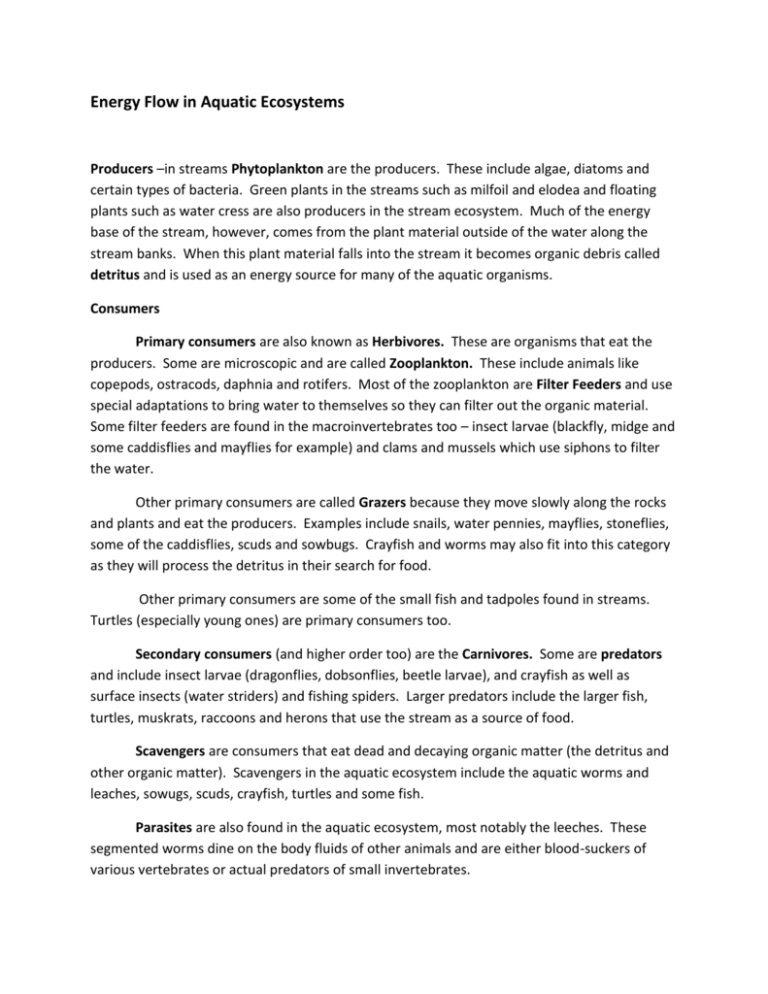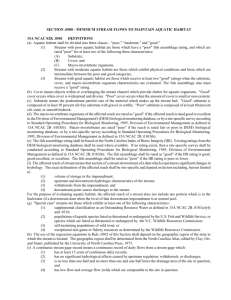Aquatic Ecosystem Energy Flow: Producers & Consumers
advertisement

Energy Flow in Aquatic Ecosystems Producers –in streams Phytoplankton are the producers. These include algae, diatoms and certain types of bacteria. Green plants in the streams such as milfoil and elodea and floating plants such as water cress are also producers in the stream ecosystem. Much of the energy base of the stream, however, comes from the plant material outside of the water along the stream banks. When this plant material falls into the stream it becomes organic debris called detritus and is used as an energy source for many of the aquatic organisms. Consumers Primary consumers are also known as Herbivores. These are organisms that eat the producers. Some are microscopic and are called Zooplankton. These include animals like copepods, ostracods, daphnia and rotifers. Most of the zooplankton are Filter Feeders and use special adaptations to bring water to themselves so they can filter out the organic material. Some filter feeders are found in the macroinvertebrates too – insect larvae (blackfly, midge and some caddisflies and mayflies for example) and clams and mussels which use siphons to filter the water. Other primary consumers are called Grazers because they move slowly along the rocks and plants and eat the producers. Examples include snails, water pennies, mayflies, stoneflies, some of the caddisflies, scuds and sowbugs. Crayfish and worms may also fit into this category as they will process the detritus in their search for food. Other primary consumers are some of the small fish and tadpoles found in streams. Turtles (especially young ones) are primary consumers too. Secondary consumers (and higher order too) are the Carnivores. Some are predators and include insect larvae (dragonflies, dobsonflies, beetle larvae), and crayfish as well as surface insects (water striders) and fishing spiders. Larger predators include the larger fish, turtles, muskrats, raccoons and herons that use the stream as a source of food. Scavengers are consumers that eat dead and decaying organic matter (the detritus and other organic matter). Scavengers in the aquatic ecosystem include the aquatic worms and leaches, sowugs, scuds, crayfish, turtles and some fish. Parasites are also found in the aquatic ecosystem, most notably the leeches. These segmented worms dine on the body fluids of other animals and are either blood-suckers of various vertebrates or actual predators of small invertebrates.











